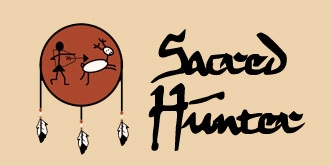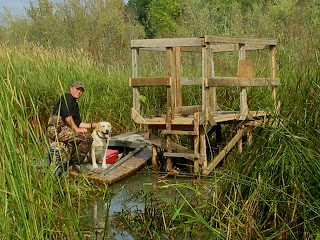Recently the royal family garnered an extraordinary amount
of attention concerning Princess Kate’s “labour.” I have no issues with pomp
and circumstance, but I was shocked at how the media sensationalized every
moment of this woman’s pain. It caused me to wonder about what labor meant to
everyone else.
Commonly, labor describes the struggle to bring a living
being into the world through excruciating pain. To others labor means simply
the daily struggle to work enough hours to pay bills. Either way, it’s about
struggle and goals. It got me to thinking “what do I labor to achieve?”
To many this question may be to simply survive, to others it
is the pursuit of an ideal, and to still others it is the striving toward transcendence.
Such is my direction.
If anyone ever asks me “How is that you can kill something
that you claim to love? You mustn’t love it very much.”
Shortly after the hunting season closes, I am subject to
withdrawal – not unlike losing a love.
I immerse myself in pity, surrounding myself with the
accoutrements of my passion. I tenderly put away decoys, winterize the boat,
fog the engine, and almost shed a tear when I have to put the tarp over the
hull. I clean my duck and goose calls with tender loving care, waxing the tone
channel below each reed and gently placing their lanyard each on their own coat
hooks. The pockets of the heavy camouflage clothing are emptied of shells,
cotter pins and assorted edible nuts.
When everything is in its place, the melancholy sets in,
like an unwanted guest promising to sit with you while you heal from the loss.
After a month of grieving, hope returns. It starts with a
memory.
As a young man I recall the intense anticipation prior to
that most sacred of days, The Opening Day. I would sit up all night in the
basement, cleaning my gun over and over again, wistfully inhaling the smell of
Hoppe’s #9 solvent, the combination of warm wood and cold blued steel in my
hands, transporting me to the fields and swamps of my imagination. I would the
colorful leaves float earthward in the outdoor spotlight and every hour I’d
listen to the weather report to check the wind direction and speed. I was 14
years old and already the bug had found its way into the center of my soul. I
am a hunter.
40 years later, I sit in my den surrounded by duck prints, a
significant library of all books waterfowl, a mounted double banded drake
mallard and a glorious grained wooden gun cabinet.
I begin practicing my duck and goose calling daily,
listening to CDs in my truck. I begin collecting all the pictures and short
videos of the season and start crafting a 6 minute video to show at the Yankee
Sportsman’s Classic. I send in my Harvest Report to the US Fish & Wildlife
and make a long list of new equipment I’d like for next season, perusing Cabelas
and Mack’s Prairie Wings. I visit North
Country Sportsman’s Club in Williston on Sundays to keep my shooting sharp.
Soon, spring creeps in and thoughts of a new hunting dog start
playing in my head at night.
Spring training consists of teaching straight line
retrieves, “back” commands, “over” to the right and left, always with the scent
of duck wings on the training dummies. The boat gets unwrapped and the repairs
begin. The crack in the transom needs attention as does the hope of adding a
new drain plug. The grass rails on the foredeck need to be re-built, and after
ripping off the plywood floor, I want to add drain holes in the ribs so water
flows freely to the back of the boat toward the new drain plug. The blind needs
new zippers where the dog jumped through the side panel instead of exiting through
the door like we’d trained. The motor needs a tune-up, new plugs, fresh oil and
lube in the lower gearcase.
Next thing I know, its summer. I order a new drybox for
shells (last year’s cardboard boxes didn’t hold up – even in the custom shellbox/gun
carrier mounted on the starboard side of the cockpit - thank you Tim Hawley!) A
new spotlight and headlamp are procured and anchor lines are tied to sparkling
new greenwing teal decoys. Trailer wheels must be lubed, grease fittings on the
boat and motor must be pumped full of the life-giving fluid. Bow and stern
lights need to be re-wired for a better connection, PFDs and fire extinguisher
must be checked, registration stickers must be purchased and a new steel keel
guard must be installed.
July rolls in as the garden is recovering from the daily
deluge and the annual visit to Dead Creek Refuge in Addison is upon us. A group
of waterfowl lovers gather at the headquarters to strategize about how to round
up 120 molting Canada geese into a pen, so that the biologists can sex and band
them. The children carefully carry the newly banded birds to a holding pen
where they regain their composure and are set free to return to their nesting sites.
The sight of so many geese makes our collective hearts sing with joy.
It’s now August and the pace increases. Work days on various
farms are in order, blind platforms must be constructed of heavy duty plywood
and 4x4’s, 6am scouting missions are now de rigeur on days when the temperature
dips below 50 degrees the night before. Decoy lines need to be checked for
wear, anchor knots need to be checked and re-tied, and calling sessions take on
a new intensity. 5-stand sporting clays are now being executed twice weekly.
The 12 gauge is being cleaned and oiled three times a week. Many hours are
spent watching the 12 different weather channels on the computer and NOAA
weather blares non-stop in the truck like an underscore to the goose calling
repertoire. I set out all my goose decoys and wash them with mild soapy water,
rinsing them with the hose and letting them dry in the seething August sun.
The pup needs to swim in the pond every evening, and as we
arrive to train in the water, a doe slips out of the cattails and bounds up the
hill to the small wooded pinnacle. A pair of mallards, just gaining their fall
plumage, explodes into the blue sky and beeline for the next pond downstream,
quacking their displeasure as their pinioned wings grasp for altitude. The dog
whines in excitement. In the sunlight, an aluminum band shines on the drake’s
leg. My heart skips a beat. Waterfowl season is now just 30 days away.
One of the layout blinds needs to be sewn. A 36” long tear
must be hand-sewn with a needle and 10 pound fishing line, penetrating 600
denier cordura cloth. After 2 ½ hours my fingers are bleeding and I am asking
myself “Why do I do this?” I answer myself out loud “Ducks!” Winter wheat
colored raffia is ordered along with 300 plastic snap swivels and 600 cable
ties. Every weekend this month we will be tying the camouflage twine into hanks
that will be attached to the stubble straps on our layout blinds.
In August, Ducks Unlimited hosts their annual Pig Roast and
Fun Shoot in Waterbury which provides all of us a chance to shoot clays out of
a boat and a layout blind and support our favorite charity.
Finally, the closing bell of summer rings. The Public
Waterfowl Meeting is held on the second Wednesday of the month. About 60 of the
most rabid waterfowlers show up to heatedly debate their preferences for
whether the Opening Day should be on a Wednesday versus a Saturday and how long
the split should be between the first and second half. Voices are raised
passionately. Then a round of applause is given for someone exhibiting a
modicum of common sense. The room is full of fanatical personalities that all
want a season that gives them the best chance at making memories that will last
the rest of their lives.
The day after the meeting the race to Opening Day is on.
Final paint touches are put on the
precisely midnight, some duck hunters are pounding in the first stake of the season for the blind they intend to occupy. There has been many a midnight that I have built blinds by the light of my headlamp, standing in 2 feet of water and mud. Banging 15’ cedar posts into the muddy bottom with an 8 lb sledgehammer until they’ve sunk deep into the primordial ooze - in the dark - epitomizes the craziness to which a waterfowler will go to stake his claim.
As I pound in the heavy stakes, surrounded by my friends who
are equally as obsessed, I laugh and ask “What in the world drives us to do
this?” In between the thud-thud-thud of the hammer we hear a sound like someone
tearing silk. We all look up at once, into the starlit heavens, and someone
says “Did you hear that?” Whistling wings are slicing the night air above us.
“Ducks!” I say. “Ducks!”
In my thesaurus, labor is defined as “toil, sweat, struggle,
and endeavor” and for what you say? What captures our souls and drives us to
subject ourselves to such struggle? Why the love of the sound of whistling
wings against the dawn, my friend. Love, I say.





